The best contenders for this competition are both insects and mammals such as yourself! Reptiles fall into this category, as do birds, fishes, and amphibians. Some genuinely incredible little animals live on this planet, but it easy for them to be missed. After all, they are just so small!
The Smallest Animal: Paedophryne Amauensis
The smallest animal is the Paedophryne amauensis frog. The body length of an average adult frog is 0.3 inches (7.7 mm), about the size of a pea. Scientists traveled to Papua New Guinea, the second-largest island globally, to study the island’s wildlife. This is where they found the world’s smallest known frog called Paedophryne amauensis. When this small frog was discovered in 2009, it was promptly awarded the title of “world’s smallest vertebrate.”
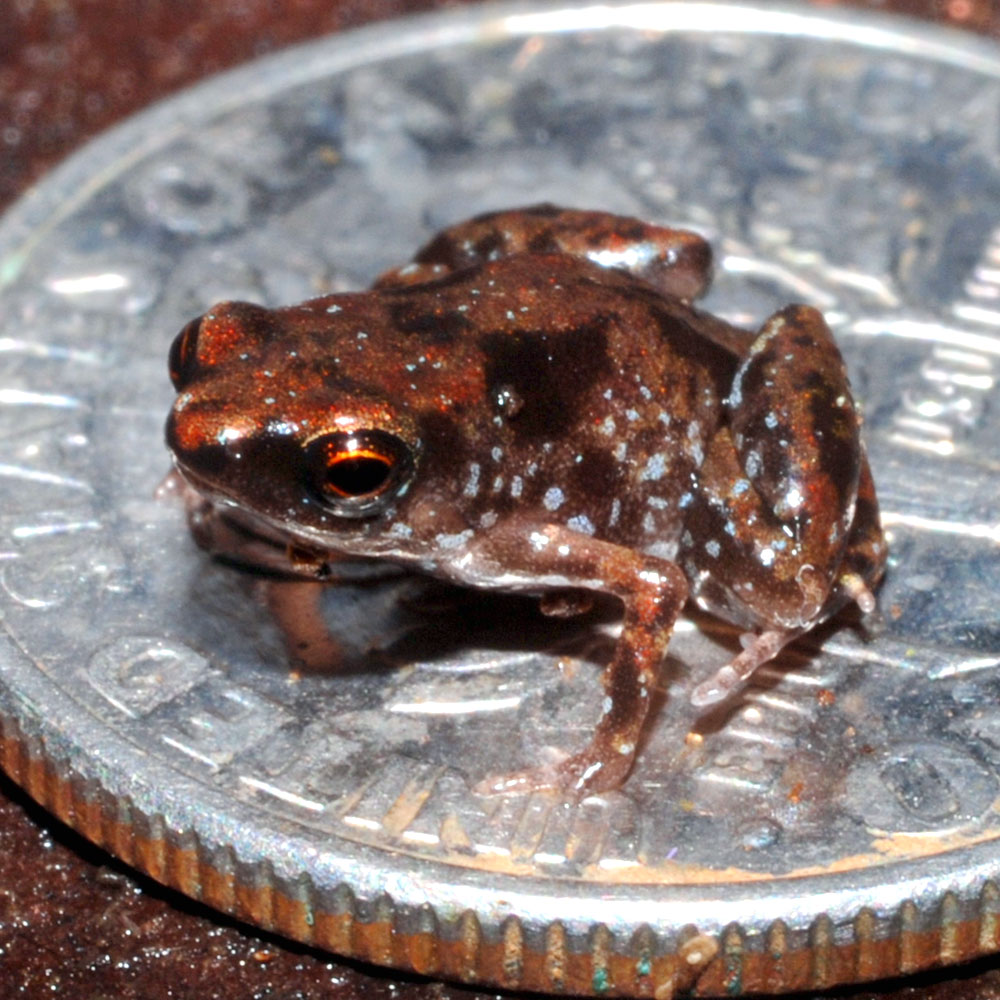
The Paedophryne Amauensis does not grow from a tadpole, but instead is born as an even smaller version of an adult frog. Amazingly, these tiny amphibians are able to hop 30 times the length of their body!
The Smallest Insect: Dicopomorpha Echmepterygis
Most species of the feathery-winged parasitoid wasp are less than 1 millimeter long! That is the size of a pinhead, so you may only just see it with your eyes or glasses. These parasitic wasps are from the Mymaridae family and the smallest ever recorded measured just 0.13 millimeters (0.005 inches)!
Like many insects, these species are sexually dimorphic. This means the males and females are so different in appearance; they can be mistaken for another species altogether. The Dicopomorpha echmepterygis wasp not only differs in size; the males do not even have wings.
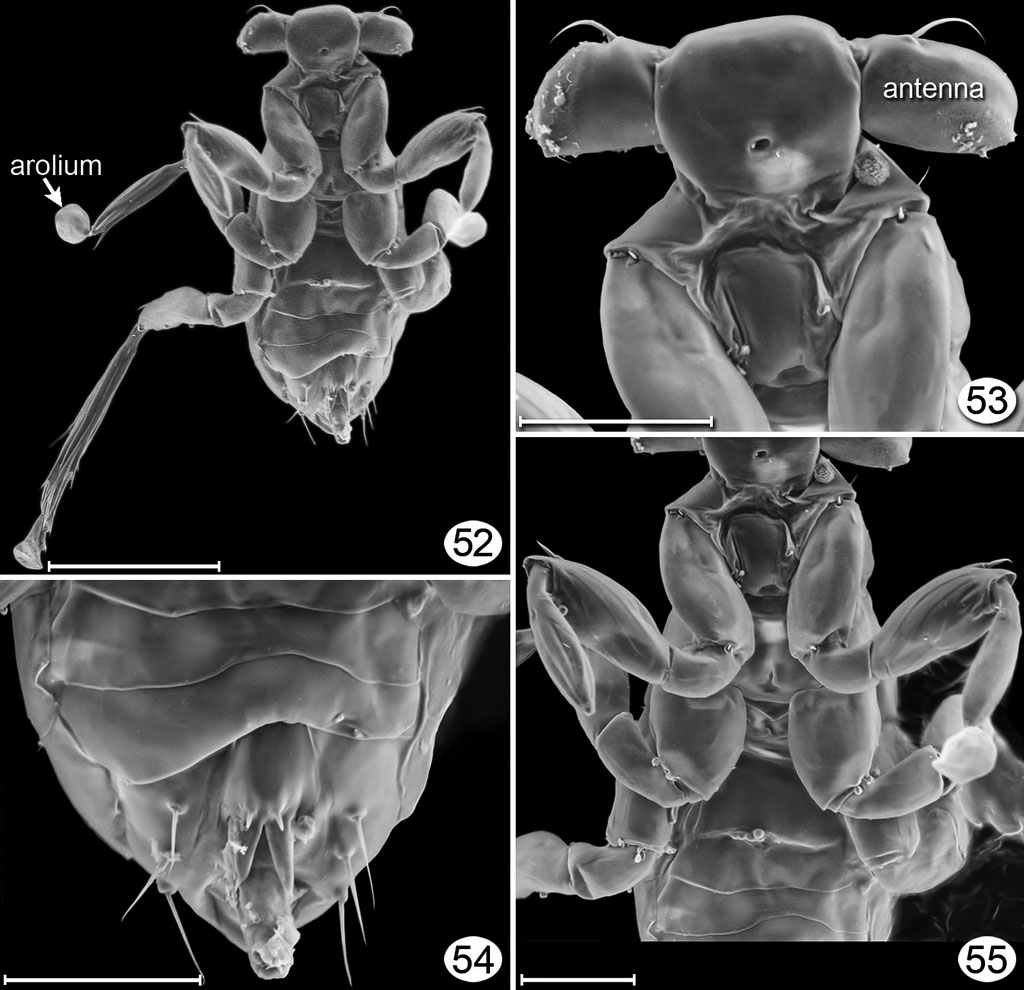
When the wasp larvae are incubating in their eggs, they are considered parasites. Mature female wasps will sneakily search among leaf litter until she finds someone else’s eggs. The mother then lays her little fairy wasp eggs inside the unknown insect eggs. The wasp larvae deplete the tiny egg of all its nutrients as it develops, killing the unborn host and emerging from a little hole in the surface of the egg.
The fairy wasp must make the most of its adult life, as it will only live only a few days, so there is no time to waste. The male and female wasp is immediately on a mission to mate before death comes knocking. The females have even less time as they also need to lay their eggs!
It has been reported that male Dicopomorpha echmepterygis wasps have been known to hatch and instantly mate with another hatching female passing away moments later.
The many fairy wasp species are celebrated for their invaluable role as biological tools in agricultural systems. Thanks to the Mymarid’s smart egg host trick, they help control the population levels of unwanted pests, including weevils, the glassy-winged sharpshooter, and other sucking bug pests eucalyptus plantations.
The Smallest Mammal in The World: The Bumblebee Bat
Weighing in at only 2 grams, the Bumblebee Bat (also known as Kitti’s hog-nosed bat) is the smallest mammal in the world. And Yes, it is the size of a large bumblebee. This bat species has been sighted living in caves in Myanmar and Thailand. These tiny bats enjoy the cool dark limestone caves near rivers and live in colonies, also known as cauldrons, of 500 family members. These groups can also be as small as 100 bat members. Can you imagine what that counting job was like?
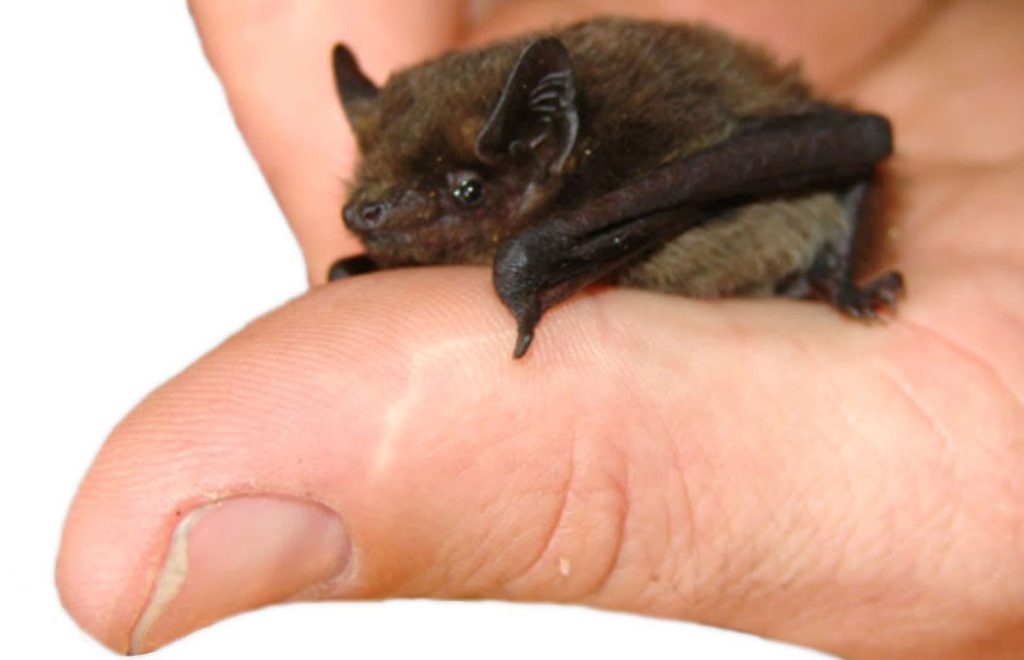
These bats are insect eaters and spend their evenings projecting squeaking noises that echo using echolocation. This savvy skill allows the bat to locate its prey with extreme accuracy. When feeding, bumblebee bats will go no further than a 1-kilometer (0.62 miles) radius from their cave.
The bumblebee bat is from the Craseonycteridae family, where scientists believe they share a common ancestor from over 40 million years ago.
Fun Fact: Did you know that bats only turn left when exiting a cave? Scientists believe this is a system they have developed to avoid collisions.
The female bumblebee bat will only give birth to one single offspring in the heat of the dry season, so these little animals need to be protected to keep their population stable. Bumblebee bats are unfortunately under threat due to habitat destruction caused by humans. The extraction of limestone from bat caves and fertilizer collection from bat roosts is taking its toll.
The Smallest Reptile: Nano-Chameleon
Madagascar’s chameleons are famously known for their incredible ability to camouflage by changing color to dissolve into the background and fool their predators. There is, however, another reason this unique reptile deserves recognition. The male Brookesia Nana, otherwise known as the nano-chameleon, has a body length of 13.5 millimeters (0.53inch) and is the smallest reptile out of 11,500 known species. The male nano measures just 22 millimeters (0.86inch). These chameleons are so small they can hide behind a blade of grass!
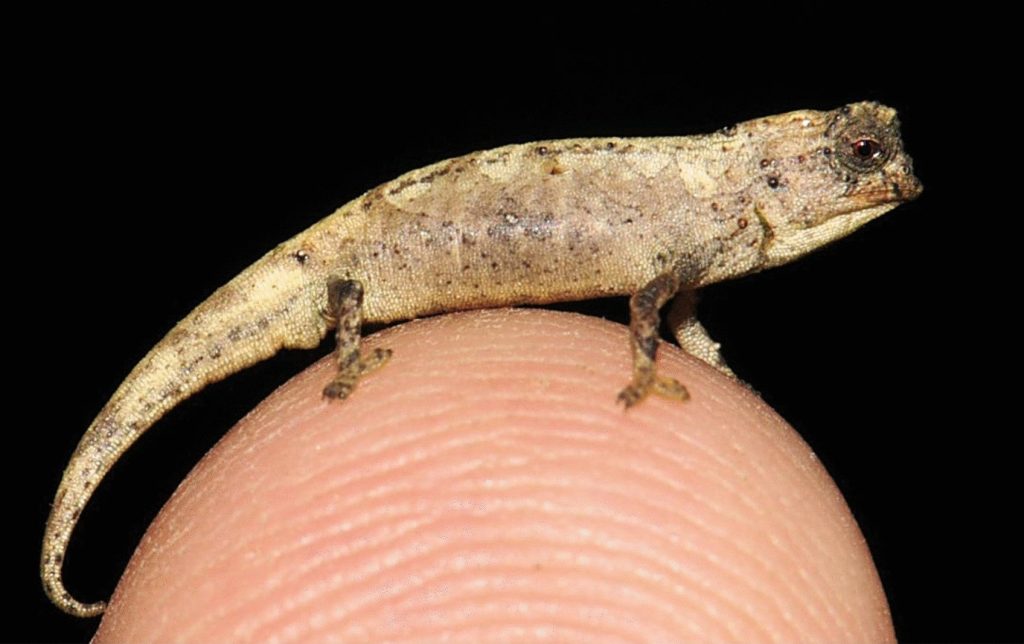
What also makes this species interesting is that the female nano-chameleon is much larger than its male counterpart, measuring at an average of 29 millimeters (1.14inch) in length.
Nano chameleons, like all chameleons, have a long sticky tongue. They forage on the forest floor, snapping up mites. Deforestation has inevitably put the species at risk; however, habitat protection has now been put in place, and these tiny reptiles have a hopeful future.
The Smallest Fish: Paedocypris Progenetica
In the forest swamps on the island of Sumatra, Indonesia, a new fish species was discovered in the last decade. Paedocypris progenetica is a tiny fish, and the females only grow to be 7.9 millimeters in length (0.31inch). This fish is so small that it was considered the world’s smallest vertebrate animal until very recently.
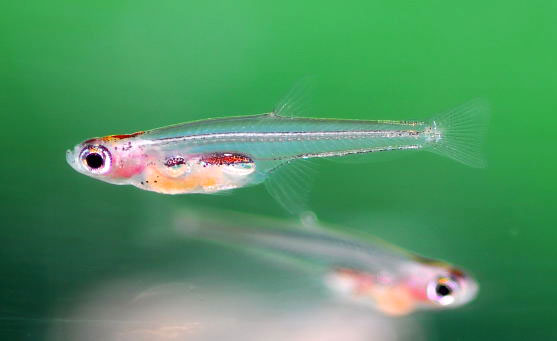
The paedocypris progenetica has a tiny and partially transparent body with a reduced head skeleton. Interestingly, their brain is wholly unprotected without bone. The paedocypris progenetica looks like larvae with some strange-looking pelvic fins to the naked eye.
Paedocypris progenetica is a very tiny member of the carp family and lives in dark muddy waters that have an acidity of pH3- over 100 times more acidic than rainwater!
Smallest Bird: The Bee Hummingbird
In Cuba, on the Isla of Youth, lives the world’s smallest bird. Fittingly it has been dubbed the ‘Bee Hummingbird”. Its scientific name is Mellisuga Helenae, and the male birds measure 57 millimeters (2.24inch). Half of this tiny creature’s length is made up of tail feathers and a small bill. The bee hummingbird only weighs 1.6 grams (0.056 oz), this is the lightest, and the female bird is only slightly larger than the male.
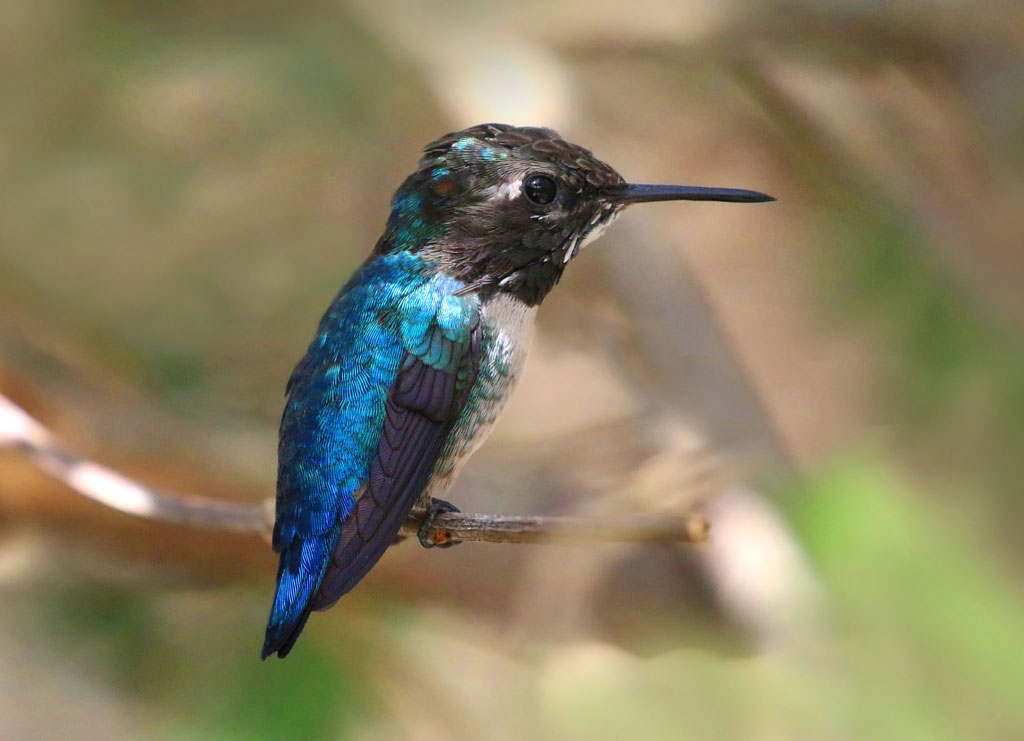
Fun Fact: The female bee hummingbird builds her nest at just 1 inch across, and her eggs are the size of a coffee bean!
There is no surprise that bee hummingbirds are sometimes mistaken for actual bees hanging around the flowers. Like any good hummingbird in flight, the bee hummingbird can beat its tiny wings 80-200 times per second, and they appear to be effortlessly hovering while eating nectar.
The World’s Smallest Marsupial: The Long-Tailed Planigale
It is hard to imagine how small the baby inside this marsupials pouch must be! As an adult, the mother Long-Tailed Planigale only measures 3 to 4 millimeters (1.8-2.5 inches) long! What makes this tiny Australian animal really different is that its entire body, including its head, is flat. Likely evolved to escape harm or attack prey, the long-tailed planigale has a one-fifth skull as deep as it is wide! This flattened body structure allows the long-tailed planigale to slip easily into cracks in the Australian outback’s hardened soil, where young animals of similar sizes are no match for this well-evolved creature.
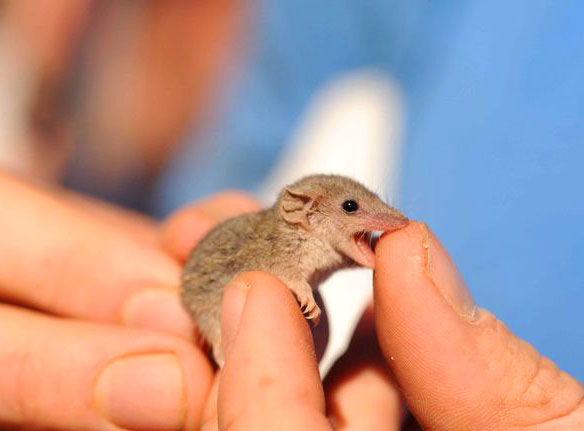
The Smallest Dinosaur: The Eye Tooth Bird
Did you know that the smallest dinosaur ever found was a primitive bird? The Oculudentavis (eye toothed bird) existed 99 million years ago and weighed less than a tenth of an ounce. The little dinosaur-bird was found inside of a drop of amber. This dinosaurs skull was only just over half an inch long, smaller than the infamous hummingbird bee! Unlike modern birds, the Oculudentavis had rows of sharp teeth in its beak and presumably ate insects.
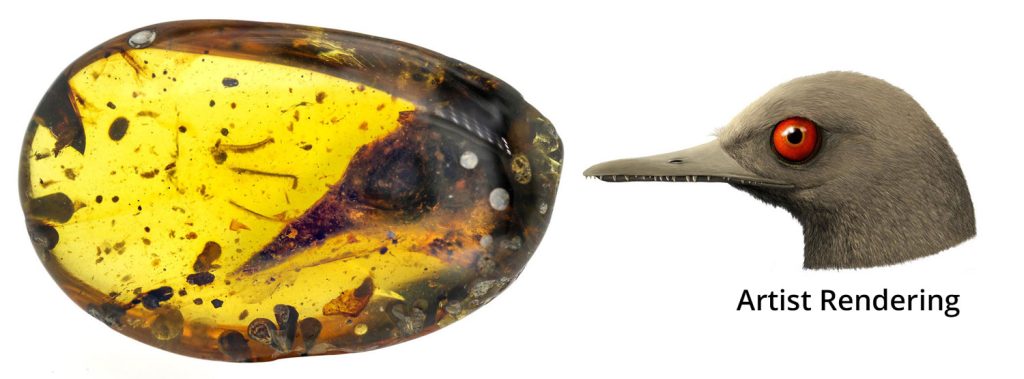
The head of this dinosaur-bird had large eyes and small pupils, indicating it had good eyesight and likely fed during the daylight. Strangely its eyes did not point forward but stuck out to the sides with no binocular vision.
Scientists believe the dinosaur-birds tiny size was due to an evolutionary response to living on small islands. This phenomenon is known as insular or island dwarfism. It is believed to be caused by limited food sources on islands and is seen in animal species today.
The Oculudentavis is unique as very few dinosaurs have been discovered fossilized in amber. The process of fossilization is commonly found in rocks that preserve much larger animals. Smaller animals are rarely found in rock. This precious find has been invaluable to science and may lead to a better understanding of other animals in the near future.
The Eye Tooth Bird was found in Northern Myanmar in 2016, and scientists worldwide have studied it. Detailed scans have been made of the fossil, never breaking open the amber that encapsulated the ancient creature. Some scientists believe that if the fossil is, in fact, a bird, we are yet to have a proper understanding of bird evolution. It is also possibly a missing link to modern-day birds who were believed to have evolved initially from flying dinosaurs. No one currently knows if this mysterious creature was a primitive bird or a small dinosaur.
Biological reasons for animal sizes and shapes:
- Aquatic animals usually have tubular-shaped bodies (fusiform shape) that decrease drag, enabling them to swim at high speeds.
- Terrestrial animals often have body shapes that are adapted to deal with gravity.
- Exoskeletons are hard protective coverings or shells that also provide attachments for muscles.
- Before shedding or molting the existing exoskeleton, an animal must first produce a new one.
- The exoskeleton must increase thickness as the animal becomes larger, limiting body size.
- The size of an animal with an endoskeleton is defined by the amount of skeletal system required to support the body and the muscles it needs to move.
Source: Boundless General Microbiology.
Final Thoughts
Scientists have speculated for many years over why some animal species are so small. Opinions vary from scientist to scientist. Felisa Smith from the University of New Mexico, Albuquerque, US, has extensively studied animal body size and explains her thoughts on the topic:
“To be truly small leads to a number of constraints – biomechanical, physiological, and ecological. So, it must be evolutionary advantageous to develop a small size. In many cases, it may be a way to avoid competitive pressures in the environment or to take advantage of an ecological niche.”
A logical explanation that makes these small animals all the more intriguing!
Small animals play a significant and vital role in the biodiversity of ecosystems all over the Earth. We may not have yet discovered all the tiny wonders that contribute to the delicate balance of life on this planet. One thing is sure, they all have a role to play, whether they are as big as a whale or as small as a fairy wasp.

Lydia King is a huge animal lover and has always been fascinated with learning about the animal kingdom. She enjoys writing about anything animal related from scientific information about rare species to animal references in pop culture.












